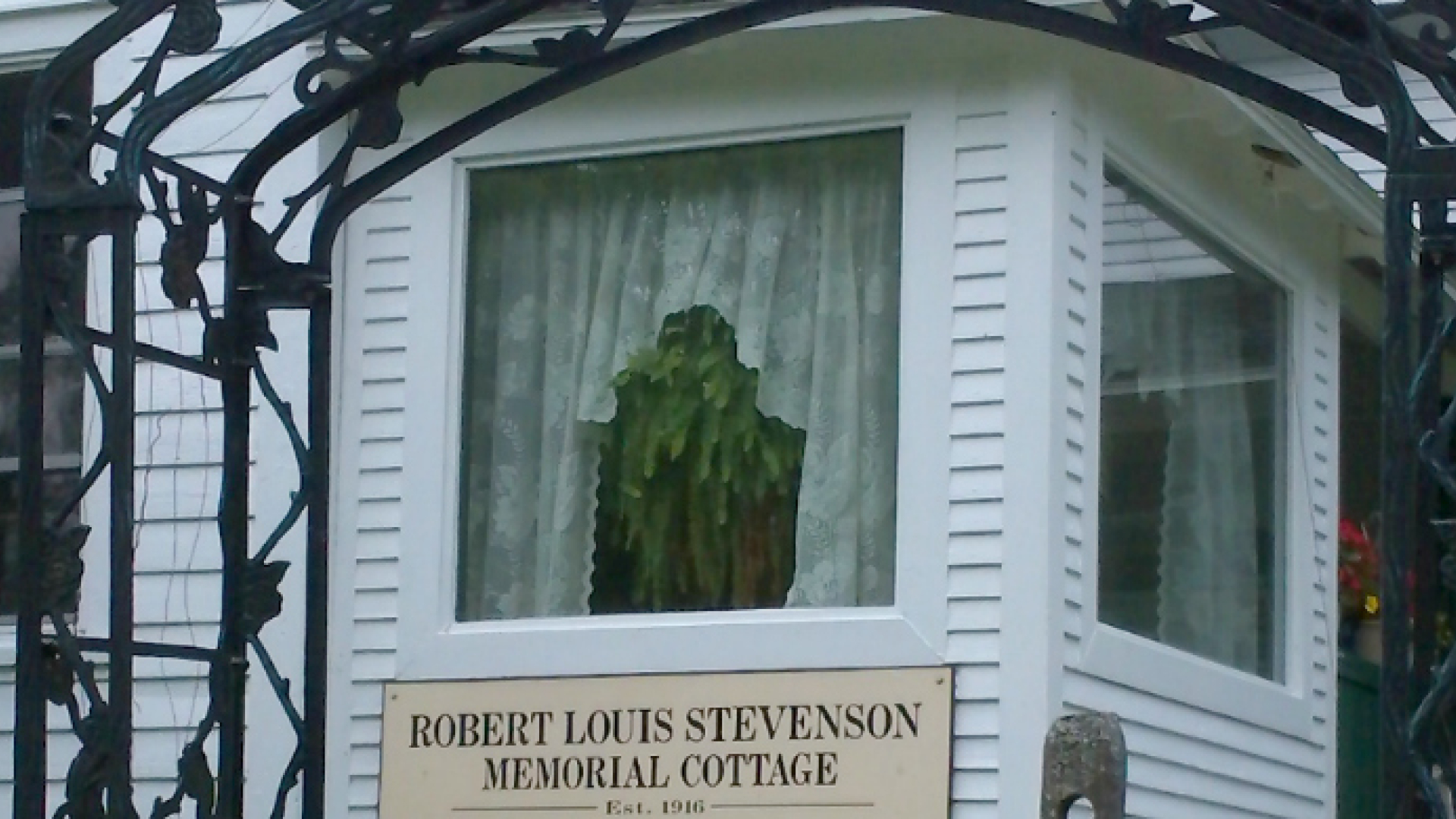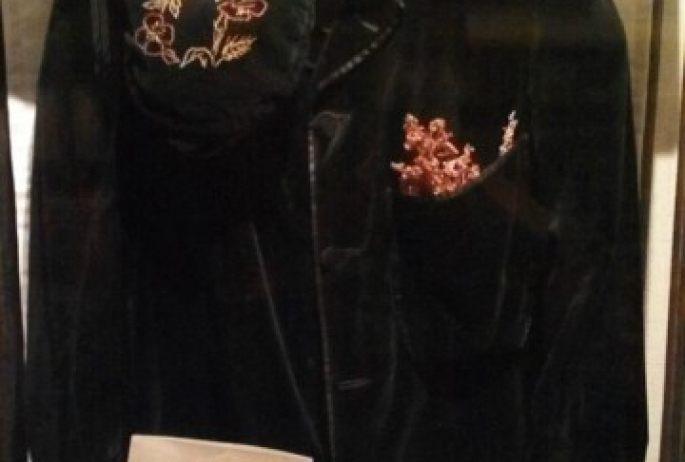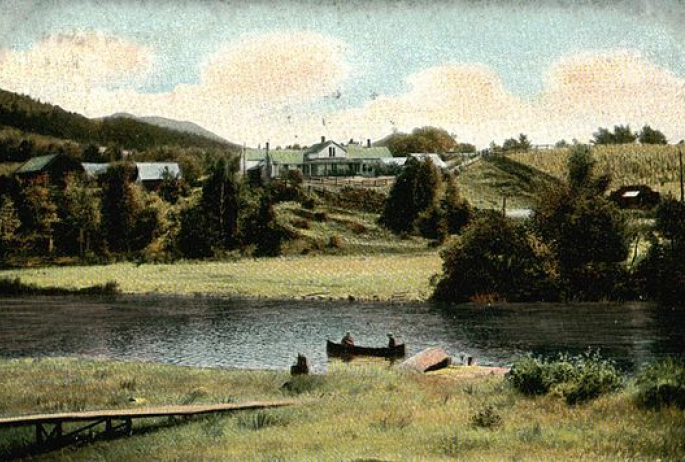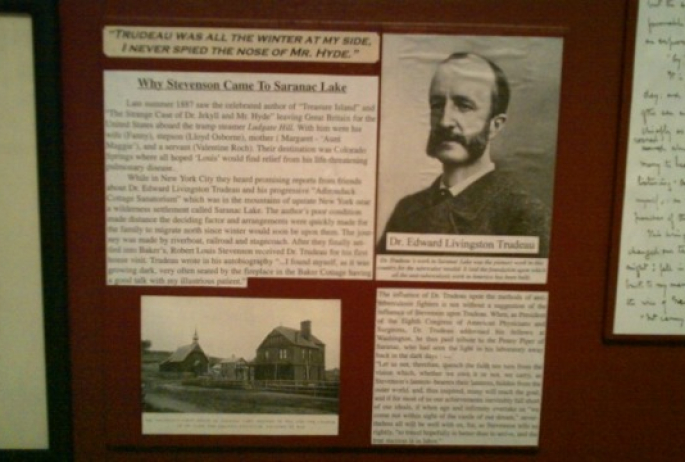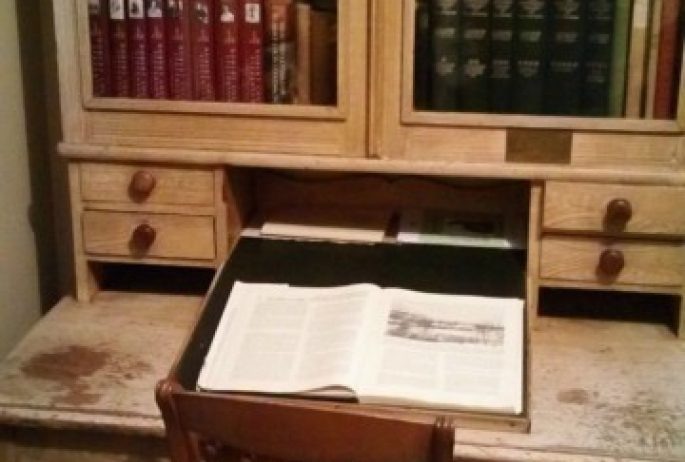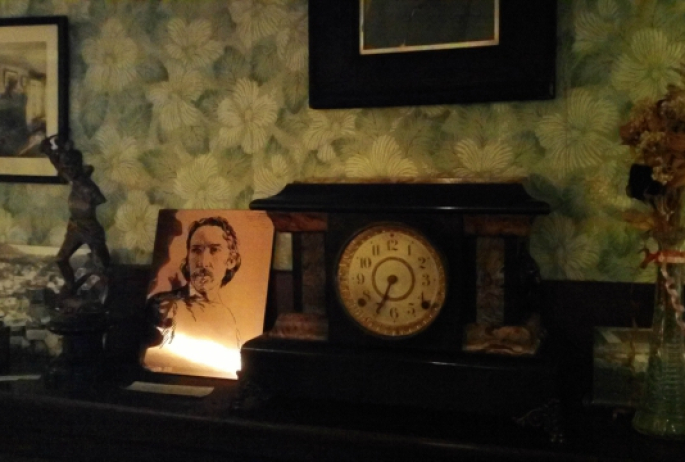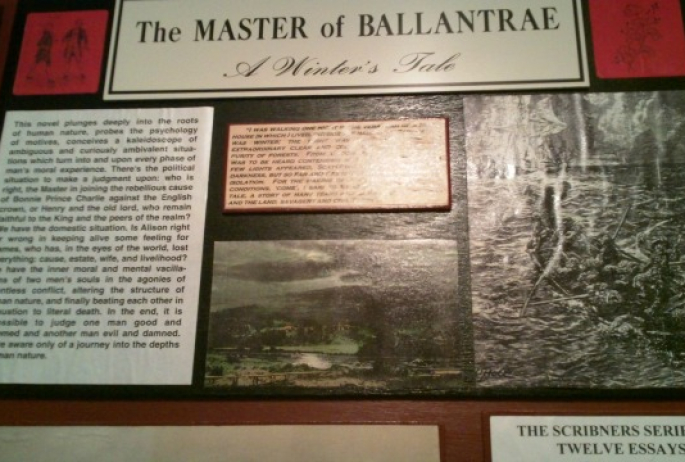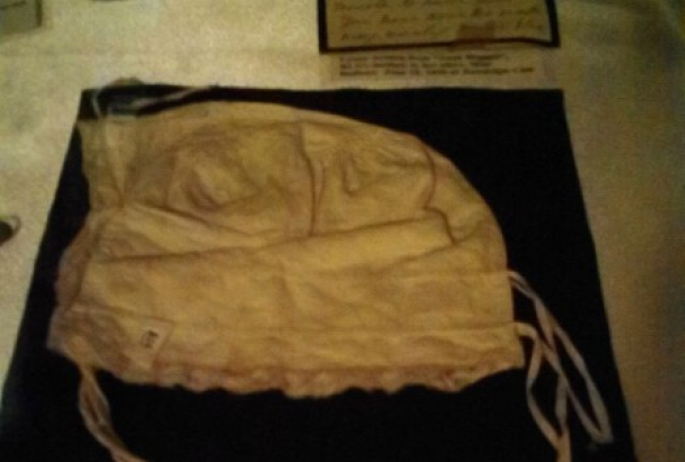Did you know Saranac Lake has the largest collection of Robert Louis Stevenson memorabilia in the world? Our village in the Adirondacks has a pivotal place in the saga of this famous author's life. Then Stevenson Cottage, where he restored his health, became the home of his legacy.
He was one of the most successful writers of the 19th century. Stories like "Treasure Island," "Kidnapped," and "The Strange Case of Dr. Jekyll and Mr. Hyde" became wildly popular books and films. Even now, his ranking moves between 24th and 26th of the most translated authors in the world, including over 200 poems. He had some contemporary fame as a travel writer, allowing him to combine these two passions.
Born in Edinburgh, Scotland, on November 13, 1850, Stevenson inherited the "weak chest" of his mother and maternal grandfather. He was a sickly child who was late to learn reading. Even so, he was known for his storytelling ability at even a young age.
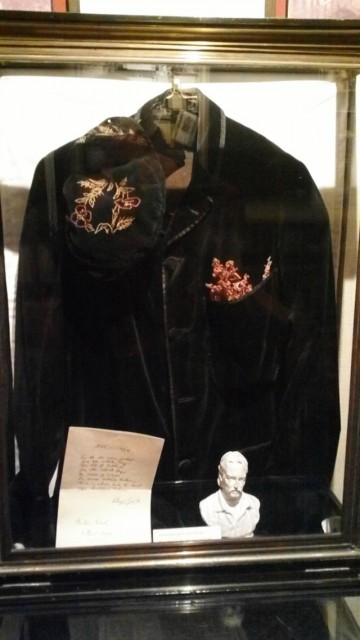
He refused to follow the family tradition and become a lighthouse builder. While he yielded to family pressure by studying law, even passing the Scottish bar exam, he never practiced professionally. Instead, he decided to travel and write, grew his hair long, and began wearing velveteen jackets - which would become a lifelong habit. His parents were very upset at his newly acquired bohemian lifestyle.
Stevenson then began a pattern of traveling and exploring until poor health would force a rest in some mild climate. As soon as he recovered, he would be off again, writing magazine articles about his travels, and often, books. He mingled with many writers and artists throughout Europe until he fell in love with a California woman, Fanny Van de Grift Osbourne, in 1876.
She had married young and tried to make the best of life with a philanderer. While living in a rough Western mining town, she learned how to shoot a pistol and to roll her own cigarettes. She was estranged from her first husband, and she and Stevenson were to marry in 1880. She would later patch up his relations with his parents by winning them over with the same charming wit that had enraptured their son.
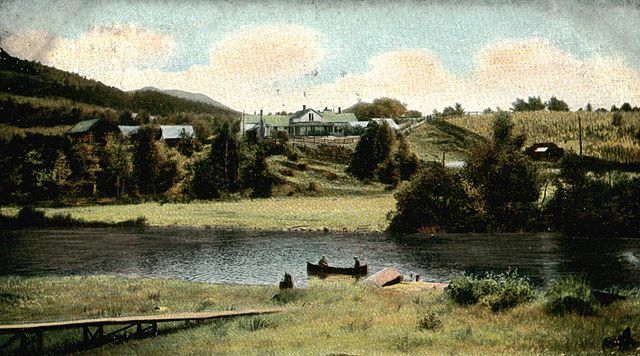
For many years Stevenson wrote fiction and moved around the United Kingdom and France, trying to find a climate that would help his fragile health. When his father passed away in 1887, he felt able to consider a "complete change of scene," as his doctor was recommending. He and Fanny set out for the American West.
Upon his arrival by ship in New York City, he was terribly ill. It was decided that the best thing to do was send him to a prominent doctor for respiratory illness; the famous tubercular specialist, Dr. Edward Livingston Trudeau.
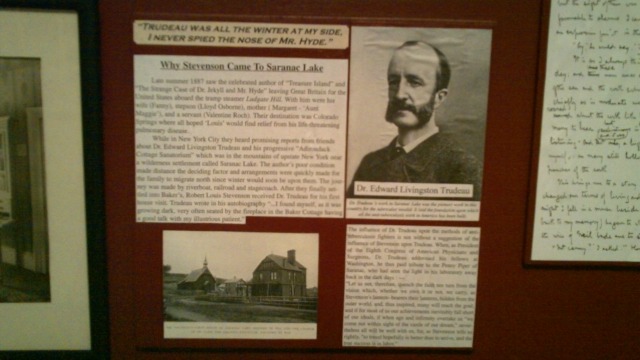
Dr. Trudeau had established the Adirondack Cottage Sanitorium in 1884, and his techniques and management had already acquired a measure of fame. When he was called in for consultation in the case, Stevenson was a newly famous author. Only the year before, in 1886, he had published "The Strange Case of Dr. Jekyll and Mr. Hyde" and this extraordinary new form of fiction had taken the continent by storm. It was to inspire countless stage productions and more than 100 motion pictures.
In his own time, Stevenson was considered both an adventurer and travel writer. His incredible popularity led to later academic dismissal of his talents as merely those of a children's, or horror, writer. By 1965 he was being re-evaluated as a significant literary theorist, essayist and social critic. He is now considered a peer of such highly-esteemed authors as Joseph Conrad (whom Stevenson influenced with his South Seas fiction), and Henry James, with psychological depth and a humanist focus.
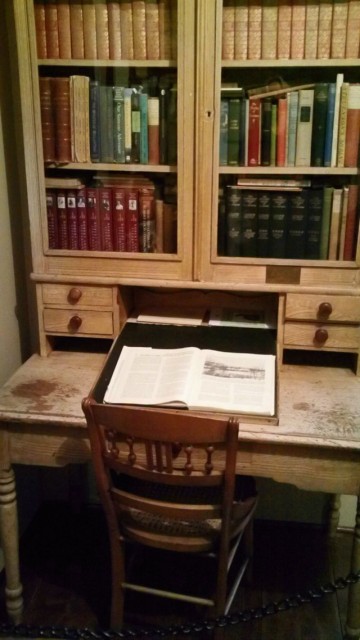
Dr. Trudeau felt home care was ideal, and found lodgings at the Baker cottage, home of local guide Andy Baker. His father ran a popular hotel near to the Pine Street bridge. In early October of 1887 Stevenson moved in with his wife, his mother, his stepson, Lloyd Osbourne, and family servant, Valentine Roch.
Stevenson showed himself to be a fascinating conversationalist and welcomed company at the end of his working day. The road from the hotel to his son's cottage soon became known as Stevenson Lane. Dr. Trudeau, along with other local intellectuals, would often drop by in the evenings for long discussions by the fire. To this day, the mantel bears the burns from Stevenson's chain-smoking. (He was not an entirely cooperative patient.) His landlords became fond of him, but Mrs. Baker would hold a grudge about the mantelpiece for the rest of her life.
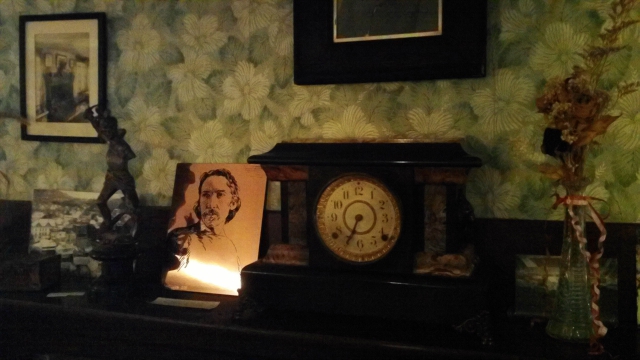
Some guests were not so popular; people seeking the author for anything other than lively discussion would find him mysteriously not at home. Andy Baker shared Stevenson's dislike of pomp and convention, and the two would sneak out the back and through the woods to the frozen expanse of Moody Pond. There they would skate, with Stevenson impressing Baker with his grace and skill on the ice.
Stevenson felt better rapidly, and while his stay was brief, many of his important works were composed here. A commission for Scribner's Magazine for essays included "The Lantern Bearers," "Beggars," and "A Christmas Sermon." He completed the major portion of "The Master of Ballantrae" and wrote, with his stepson, on a famous mystery novel, "The Wrong Box." He complained that he needed to put his inkwell by the fire to thaw it out, yet wrote a poem called "Winter."
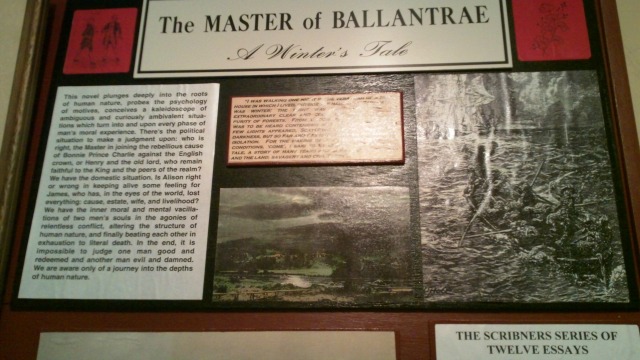
So while the author, who loved travel, was gone by the next April, the newly named Stevenson Cottage would continue to loom large in his legacy. It was a place that would be kept much as he had left it, since his fans continued to show up at the most accessible place where he had once lived. He sailed to Samoa shortly after leaving, where he spent the rest of his life, before his death in 1894.
Interest in the significance of the cottage continued to grow. On October 30, 1915, Mrs. Baker herself unveiled a commemorative plaque sculpted by Borglum, the same artist who had done the Mt. Rushmore presidential sculptures. Three years later, the Stevenson Society purchased the Baker cottage and began sending all of its collection items there. The first year it was open to the public, over one thousand visitors came to pay homage. Thanks to the dedication of Stevenson fans from all over the world, it's an extraordinary collection of the writer's entire life, from some of his baby items to artifacts from his final home on Samoa.
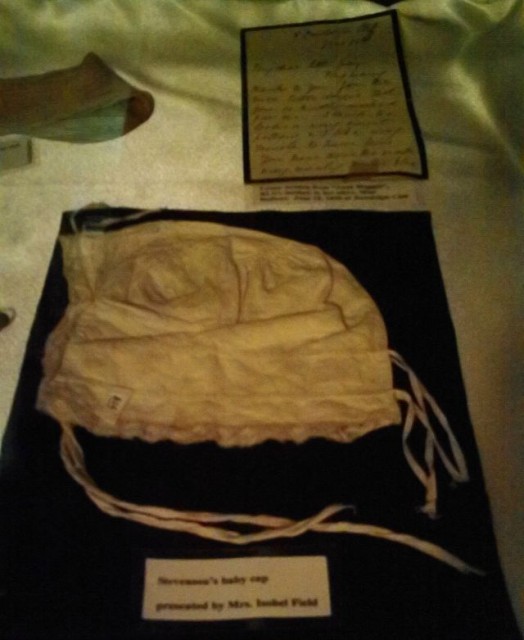
Stevenson Cottage is open July 1 to Columbus Day each year, from 9:30 AM to 12 noon, and 1 PM to 4:30 PM. They are closed Mondays, but appointments can be made all year.
Explore all of Saranac Lake's incredible history. Find your own special lodging in one of Saranac Lake's Adirondack-style cabins and cottages. Have a great conversation at one of our dining spots.
